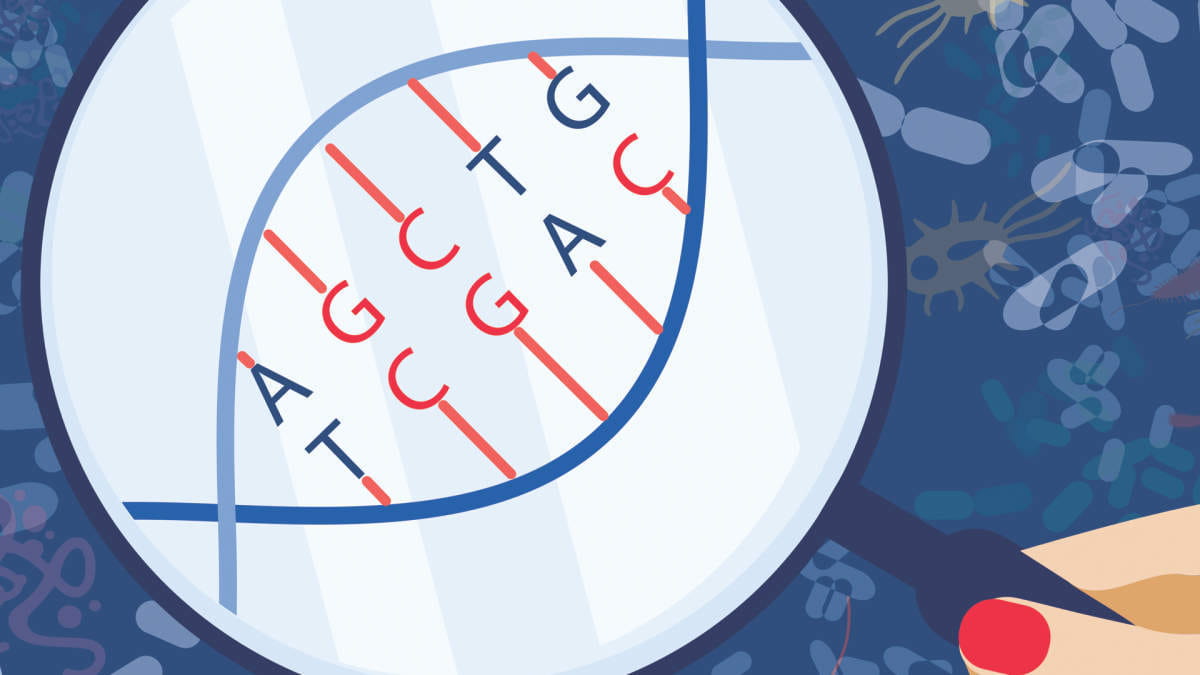
Understanding microbial communities
Microbiome research helps us better understand how bacteria, fungi, archaea and viruses affect our lives and environments. In the past, microbiome research was limited to our ability to culture microbes to characterize our microbial world.
However, not all microbes can be grown in cultures, and artificial pure culture deprives microbes of the interactions with other species that dictate their characteristics, behaviors and evolutionary paths. This means that the genotypes and phenotypes of microbes within petri dishes are very likely different than those found in nature (1).
With microbial next-generation sequencing (NGS) methods, we can gain critical genetic insight into the microbes that live in, on and around us.
What is metagenomics or metagenomic sequencing?
Metagenomics, or community genomics, is the genetic analysis of microbial communities in their natural living environments without isolating and culturing individual species. It gives a comprehensive insight into the biochemical and metabolic interactions within these communities.
Metagenomics can also help identify individual species within microbial habitats without pre-isolation. It can also reveal the adaptive mechanisms of microorganisms under environmental stress and their interactions within the communities and with other components of their surroundings.
Metagenomics for microbiome research
There are currently three popular methods of metagenomic sequencing. Whole genome shotgun sequencing offers the ability to simultaneously study non-bacterial microbes (e.g., fungi and viruses) alongside bacteria (2), but requires more sequencing budget. Alternatively, 16S/18S/ITS sequencing can focus exclusively on targeted regions. It is useful for bacterial phylogeny and taxonomy investigations (3). Metatranascriptomics, as the investigation of gene expression of the community, offers dynamic insights such as metabolic activities and host-microbiome interactions, complementary to static snapshots of community composition and potential by WGS shotgun or 16S/18S/ITS sequencing.
Additionally, a metagenomic sequencing method enables de novo genome assembly of novel organisms (such as SARS-CoV-2 early during the pandemic), finish genomes of known organisms, or compare genomes across hundreds of organisms using the power of high-throughput sequencing.
Limitations of current methods
While metagenomic sequencing methods like WGS, 16S/18S/ITS, and metatranscriptomics offer powerful tools for studying microbial communities, they come with certain limitations.
Whole genome shotgun sequencing can suffer from biases, such as non-uniform genome coverage, which affects the accuracy of microbial abundance estimates (4).
The amplification step in 16S/18S/ITS sequencing can introduce biases due to differences in the copy number of ribosomal genes and the potential for PCR artifacts. This can skew the representation of microbial abundances (5). Additionally, the universal primers used in 16S/18S/ITS sequencing may not match all target sequences equally well, leading to incomplete or biased detection of some taxa (6).
Metatranscriptomics is rewarding yet complicated. You can run into issues with sensitivity when performing RNA-seq of complex microbial community samples. The consequence? The absence of on-target reads and the failure to capture low-abundance mRNA transcripts. This means hours of RNA-seq optimization to get it right. This article summarizes how to avoid wasting RNA-seq reads in metatransciptomic analysis.
Featured products: Increasing accuracy in metagenomic sequencing
Related resources: Top 3 metagenomics webinars
Additional resources
References:
- National Research Council (US) Committee on Metagenomics: Challenges and Functional Applications. The New Science of Metagenomics: Revealing the Secrets of Our Microbial Planet. Washington (DC): National Academies Press (US); 2007.
- Jovel, J. et al. (2016) Characterization of the gut microbiome using 16S or shotgun metagenomics. Front Microbiol. 7, 459.
- Janda, J. M. and Abbott, S. L. (2007) 16s rRNA gene sequencing for bacterial identification in the diagnostic laboratory: pluses, perils, and pitfalls. Clin. Microbiol. 45(9), 2761–2764.
- Chouvarine, P., Wiehlmann, L., Losada, P., DeLuca, D., & Tümmler, B. (2016). Filtration and Normalization of Sequencing Read Data in Whole-Metagenome Shotgun Samples. PLoS ONE, 11.
- Khachatryan, L., Leeuw, R., Kraakman, M., Pappas, N., Raa, M., Mei, H., Knijff, P., & Laros, J. (2020). Taxonomic classification and abundance estimation using 16S and WGS-A comparison using controlled reference samples.. Forensic science international. Genetics, 46, 102257.
- Losada, P., Tümmler, B., Wiehlmann, L., & Chouvarine, P. (2014). Whole metagenome shotgun sequencing analysis of microbiome of cystic fibrosis- and COPD patients. European Respiratory Journal, 44, 1212.



